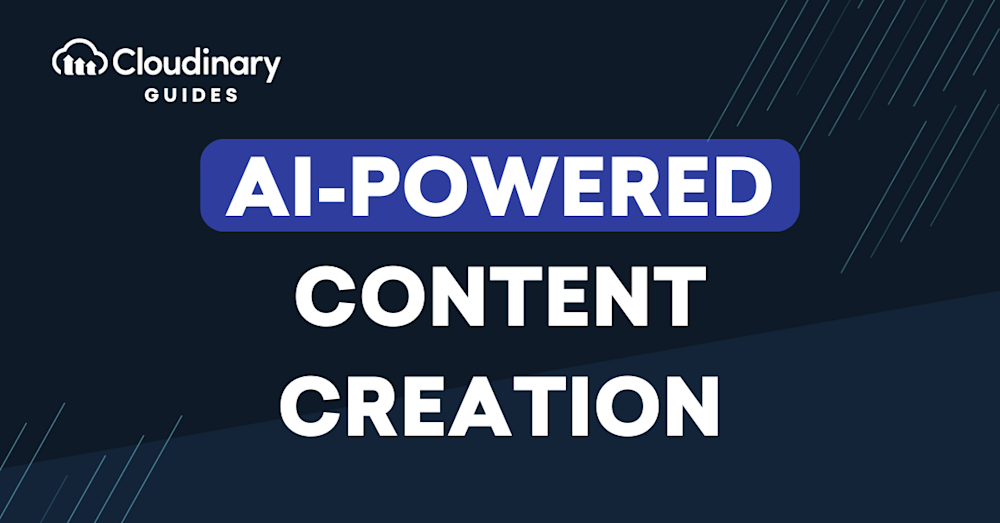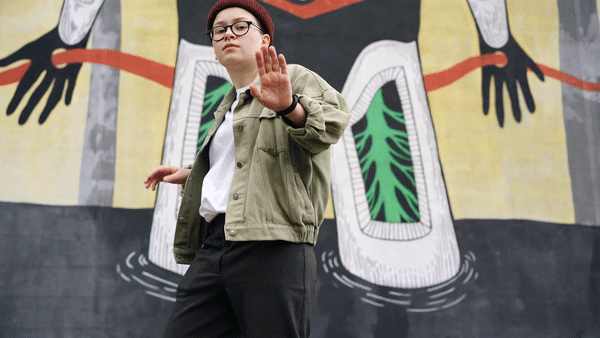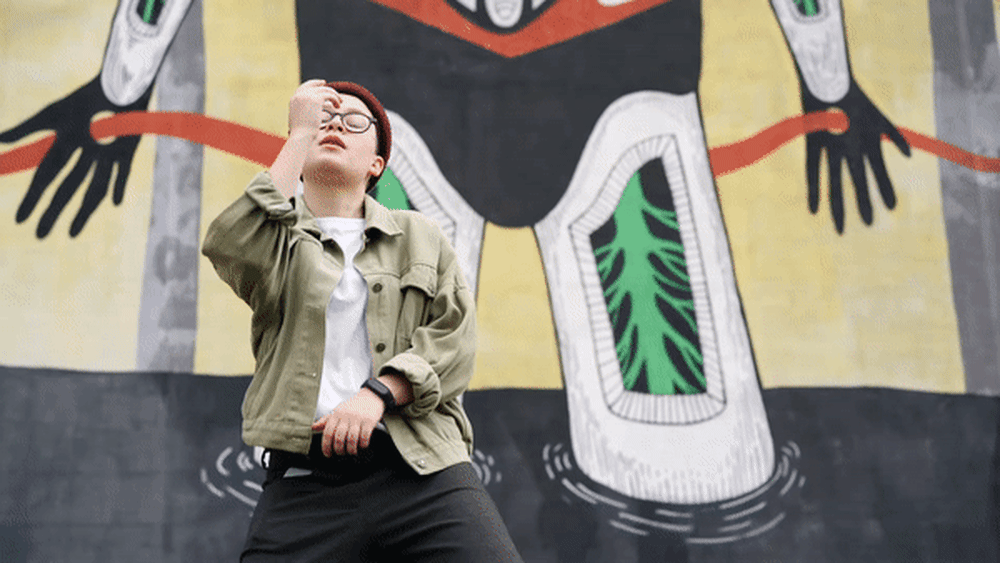Within the last twenty years, fueled by rapid advances in technology, the art of content creation has undergone a remarkable transformation. From traditional formats like print media to the dynamic world of digital platforms, creators have consistently adapted to new mediums, tools, and audience expectations. This evolution has paved the way for groundbreaking innovations that continue to shape the future of content production.
One of the most significant shifts has been the rise of AI-powered content creation. Over the past few years, artificial intelligence has emerged as a powerful ally for creators and businesses alike. For digital marketers and content professionals, AI tools streamline workflows, spark ideas, and enable smarter content strategies. For organizations, they offer scalable, cost-effective solutions for multi-channel marketing, making it easier to meet the growing demand for personalized and engaging content.
The true potential of AI lies in its ability to deliver efficiency, personalization, and scalability at unprecedented levels. By choosing the right tools and learning how to use them effectively, creators and businesses can unlock transformative opportunities.
In this article:
- What is AI-Powered Content Creation?
- The Advantages of AI-Driven Content Creation
- The Limitations of AI Content Creation
- Top 12 AI Tools for Content Creation
- Step-by-Step Guide to Creating Content with AI
- Using Cloudinary for Content Creation
What is AI-Powered Content Creation?
AI-powered content creation leverages artificial intelligence, machine learning, and data analysis to assist, automate, or enhance the production of diverse content. It blends human creativity with computational efficiency to deliver tailored material for varied audiences. Applications range from natural language generation for text to generative algorithms for images, videos, music, and virtual characters.
Popular tools include Jasper.ai for blogs, Copy.ai for social copy, Canva for images, and Synthesia for avatar videos. Beyond execution, AI supports strategy and planning, marking a significant shift in how content is conceived, produced, and distributed.
The Advantages of AI-Driven Content Creation
Time-Saving and Efficiency
AI-driven content creation streamlines workflows by automating repetitive tasks such as ideation, data analysis, and first-draft generation. A blog post that might take hours to research and write can now be produced in minutes. This efficiency allows creators to dedicate more time to strategy, creativity, and refining the final product.
Productivity and Scalability
AI tools can quickly generate blogs, social posts, product listings, landing pages, videos, and emails. They enable businesses to produce large volumes of content consistently, ensuring quality while scaling across multiple platforms. This scalability supports global reach and localized adaptations without overwhelming resources.
Cost Savings
Outsourcing content or relying solely on in-house teams can be costly. AI tools help control expenses by reducing the need for freelancers and alleviating pressure on internal staff. They streamline the ideation and briefing process, making content creation more affordable and sustainable.
Personalization and Engagement
By analyzing user preferences, behaviors, and past interactions, AI empowers personalized experiences. This targeted approach ensures content resonates more deeply with audiences, fostering stronger engagement, brand loyalty, and higher conversion rates.
SEO and Optimization
Modern AI tools offer built-in SEO support, enabling instant keyword research, optimization insights, and content idea generation. They help identify keyword trends, refine on-page elements, and create competitive content tailored for search engine visibility.
Enhanced Content Quality
Although AI-generated content often benefits from human editing for tone and nuance, it delivers consistent first drafts that save valuable time. This synergy between automation and human creativity ensures high-quality output while maximizing efficiency.
The Limitations of AI Content Creation
AI-powered tools bring undeniable advantages, but the technology is still developing and faces several hurdles that content creators must navigate.
Limited Creativity and Originality
While AI can generate content quickly, it lacks true imagination. These systems follow structured prompts and patterns, which often leads to predictable, repetitive material rather than fresh, innovative ideas.
Lack of Relatability and Authenticity
AI-generated text frequently struggles to connect on a human level. Even the most advanced tools can feel mechanical, falling short when the goal is to spark emotion or create a genuine sense of authenticity.
Inconsistent Tone of Voice
Maintaining a consistent brand voice is crucial in content marketing. With long-form AI output, it’s common to encounter fluctuations in tone, making messaging appear fragmented or off-brand.
Accuracy and Reliability Issues
Although AI improves with use, it still produces errors, especially with complex or nuanced topics. Basic prompts may yield acceptable results, but deeper or technical requests increase the likelihood of inaccuracies slipping in.
Compromised Content Quality
When inconsistencies in tone, factual errors, and a lack of nuance combine, the overall quality of AI-generated work suffers. Even for short blogs, subpar content can weaken a brand’s reputation.
Weak Contextual and Cultural Understanding
Human writers bring cultural awareness and linguistic subtlety that AI cannot replicate. Despite sophisticated programming, AI often misinterprets context or misses cultural nuances, leaving content feeling flat or tone-deaf.
Ethical Considerations
AI use raises concerns around plagiarism, misinformation, and misleading content. Over-reliance on automated tools can erode trust with audiences and potentially harm brand credibility.
Search Engine Detection Risks
Search engines are increasingly adept at spotting AI-generated text. Google’s algorithms can detect unnatural grammar, syntax, or structure, raising the possibility of content being flagged or penalized in rankings.
Top 12 AI Tools for Content Creation
Looking to harness AI for content creation? Here are 12 of the top tools available, along with their features, pricing, and pros and cons.
1. Jasper.ai: Best for Blog Post Writing
Key Features: Offers 50+ templates for blogs, product descriptions, and social posts. Easy briefing setup with customizable tone.
Pricing: From $69/month per user.
Pros: Wide template range, Grammarly integration, great for ideation.
Cons: Enterprise pricing varies, limited scalability, integrations cost extra.
2. Copy.ai: Best for Social Media Copywriting
Key Features: Ideal for creating engaging social posts. Includes a drafting wizard and collaboration features.
Pricing: Paid plans from $29/month.
Pros: Easy to use, free option available, great for short-form content.
Cons: Weak for long-form writing, unlimited access requires upgrades.
3. Surfer SEO: Best for SEO Content Writing
Key Features: Includes keyword analyzer, content editor, and competitor insights.
Pricing: From $99/month to $219/month.
Pros: Great editing interface, strong customization, integrations with Google Docs/WordPress.
Cons: Keyword suggestions can be unreliable; SERP tool is complex.
4. Canva: Best for Image Generation
Key Features: AI-driven image creation with editing features and aspect ratio controls.
Pricing: Free plan available. Pro starts at $15/month.
Pros: Affordable, multiple variations per prompt, easy adjustments.
Cons: Image quality varies; copyright rules differ by region.
5. InVideo: Best for Video Content Creation
Key Features: 1,000+ templates plus Shutterstock and Storyblocks access. Simple interface for beginners.
Pricing: Free with watermark. Paid plans from $35/month.
Pros: Huge template library, easy to use, versatile media assets.
Cons: Template-locked projects, slow rendering, not ideal for weak connections.
6. Synthesia: Best for Avatar Video Creation
Key Features: Creates realistic AI avatars and localized audio in 120+ languages. Designed for e-learning and marketing.
Pricing: Limited free plan. Paid plans start at $29/month.
Pros: High video quality, personalization options, great for short promos.
Cons: Limited features in personal plan; lacks professional polish; weak API.
7. Murf: Best for Text-to-Voice Generation
Key Features: Converts text to natural-sounding voices with emphasis, pauses, and pitch adjustments.
Pricing: Free plan available. Paid plans start at $29/month up to $99/month.
Pros: Wide voice selection, customizable delivery, multimedia integration.
Cons: Filters aren’t great, limited customization, relatively costly.
8. Descript: Best for Audio & Video Editing
Key Features: AI tools for editing podcasts and videos, including overdubbing and transcription.
Pricing: Free version is available. Paid plans start at $24/month.
Pros: Beginner-friendly, overdubbing saves time, strong transcription.
Cons: Limited timeline editing, heavy processing needs, learning curve.
9. HubSpot: Best for Content Strategy
Key Features: AI-driven tools for emails, CTAs, and social content. Includes brainstorming and paragraph generation.
Pricing: Custom pricing with a free trial available.
Pros: Great for marketers, strong ideation features, part of HubSpot ecosystem.
Cons: Works only within HubSpot; unclear pricing.
10. ChatGPT: Best for Content Ideation & Writing
Key Features: Generates text, answers questions, ideates content, and even creates audio and logos with prompts.
Pricing: Free plan available. Plus plan: $20/month.
Pros: Extremely versatile, easy to use, automation-ready.
Cons: Free plan is limited; accuracy and nuance vary.
11. Grammarly: Best for Grammar & Style
Key Features: Real-time grammar, clarity, and tone suggestions. Includes plagiarism checker and brand voice detection.
Pricing: Free plan available. Their Pro plan is $30/month.
Pros: Strong integrations, tone detection, advanced style suggestions.
Cons: Free plan limited; suggestions can sometimes stifle creativity.
12. Perplexity: Best for AI Research & Search
Key Features: Context-aware search with summarized results and citations. Great for blogs, reports, and campaigns.
Pricing: Free plan available. Premium plans start at $20/month.
Pros: Fast, citation-backed answers, saves research time, intuitive interface.
Cons: Limited advanced features in free plan; niche queries may be less effective.
Step-by-Step Guide to Creating Content with AI
Ready to harness the full potential of AI? Follow these steps to streamline your workflow and supercharge your content strategy.
Know Your Audience
AI is only as effective as the prompts you provide. Start by clearly defining your audience, demographics, preferences, and behaviors. Without this foundation, AI-generated content is unlikely to resonate or deliver meaningful results.
Select the Right Tools
Not all AI platforms serve the same purpose. Some excel at generating blog outlines and draft articles, while others are built for editing videos, designing graphics, or creating social copy. Choose tools that match your specific content goals.
Generate Ideas Across Channels
Use AI to brainstorm and draft content for multiple platforms. Whether it’s blog posts, social media snippets, or newsletters, leverage the strengths of different tools to ensure coverage across all channels in your strategy.
Conduct Keyword Research
Modern AI tools simplify SEO. They can instantly surface keyword trends, search volumes, and competitive insights, making it easier to create optimized content that connects with your audience.
Create and Refine Content
AI goes beyond drafting text. It can help overcome writer’s block, suggest headlines, or rewrite dull passages. Use it to speed up the writing process, then refine the output with your personal expertise and brand voice.
Expand Beyond Text
AI isn’t limited to copywriting. With image, video, and audio generation tools, you can design graphics, edit media, and produce polished assets without advanced technical skills or expensive software.
Repurpose and Improve Accessibility
Maximize value by repurposing AI-generated work. Break a long article into bite-sized social posts, or use it as the backbone of a content series. Always adjust formatting for readability, shorter paragraphs, scannable headers, and accessible design make a big difference.
Using Cloudinary for Content Creation
Cloudinary offers a powerful suite of robust AI-driven tools that can help empower your content creation process. Features such as generating video previews and performing AI tagging on images harness the capabilities of artificial intelligence to take your content to the next level.
Before diving into the practical examples we’ll discuss below, there are a few prerequisites you should have in place:
- Cloudinary Account – Since we’ll be using Cloudinary, you’ll need to have a Cloudinary account. If you don’t already have one, you can sign up here to get started.
- Node.js Installed – You’ll also need Node.js installed on your system to make use of Cloudinary’s capabilities.
- Basic JavaScript and Node.js Knowledge – Familiarity with basic JavaScript and Node.js will be beneficial as we continue.
Start by creating a Node.js project in the directory of your choosing and installing the Cloudinary Node JS SDK using the following node command:
npm install cloudinary
Next, login to your Cloudinary account, head over to the Dashboard tab and retrieve your Product Environment Credentials.
Now, create a .js file in your project directory and configure the Cloudinary SDK with your account credentials:
const cloudinary = require('cloudinary').v2;
cloudinary.config({
cloud_name: "your-cloud-name",
api_key: "your-api-key",
api_secret: "your-api-secret"
});
Replace your-cloud-name, your-api-key, and your-api-secret with your actual Cloudinary credentials.
Video Previews
Creating captivating video previews is essential to engage your audience effectively. With Cloudinary, you can easily generate these previews using AI-driven effects.
Let’s consider an example where you want to upload a video and create its preview. Start by creating an Assets folder in your project directory and adding a video file. Here, we will be using cld-sample-video.mp4, available in Cloudinary’s demo cloud.
Next, specify the path to the local video file you want to upload and set a custom public ID for the uploaded video:
const localVideoFilePath = './Assets/cld-sample-video.mp4'; const publicId = 'my-video';
Finally, use the uploader method to upload the video, then generate a preview using the effect parameter:
cloudinary.uploader.upload(localVideoFilePath, {
public_id: publicId,
resource_type: "video"
}, (error, result) => {
if (error) {
console.error(error);
} else {
// Generate a URL for the video with the "preview" effect
const videoPreviewUrl = cloudinary.video(publicId, {
effect: "preview",
resource_type: "video"
});
console.log("Video Preview URL:", videoPreviewUrl);
}
});
Here is what the preview looks like:
Generating Captions
After working with videos, let’s learn about content creation when working with images. AI content analysis for images involves extracting descriptive information from images, such as captioning an image. AI captioning and tagging is a game-changer when it comes to categorizing your images. Cloudinary’s AI capabilities make this process seamless. Here, we will be using boy-snow-hoodie.jpg, also available in Cloudinary’s demo cloud.
First, specify the path to the image you want to analyze and upload it to Cloudinary with the detection set to captioning:
const imageFilePath = './Assets/boy-snow-hoodie.jpg';
cloudinary.uploader.upload(imageFilePath, { detection: 'captioning' })
.then(result => {
console.log("AI Captioning Result:", result.info.detection.captioning);
})
.catch(error => {
console.error(error);
});
The result includes descriptive captions generated by the AI. By using AI tagging you can automatically analyze and tag images, making them more discoverable and organized.
Wrapping Up
The domain of AI-driven content creation has ushered in a transformative era. Its rapid content production, exceptional personalization, and scalability have revolutionized the content landscape. AI is no passing trend; it’s a cornerstone of the future. The future of content creation is intricately intertwined with AI, promising heightened efficiency, unprecedented creativity, and boundless innovation. It’s a journey worth undertaking, and those who do will thrive in the ever-evolving digital landscape.
If you’re ready to embark on this transformative journey and harness the full potential of AI in your content creation endeavors, you should sign up to Cloudinary. With Cloudinary’s AI features and tools, you can elevate your content to new heights, captivate your audience, and stay at the forefront of the ever-evolving digital landscape.
Learn more:
Mastering Content Marketing Assets







